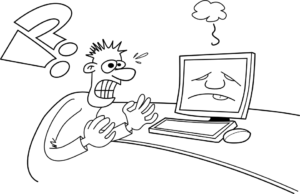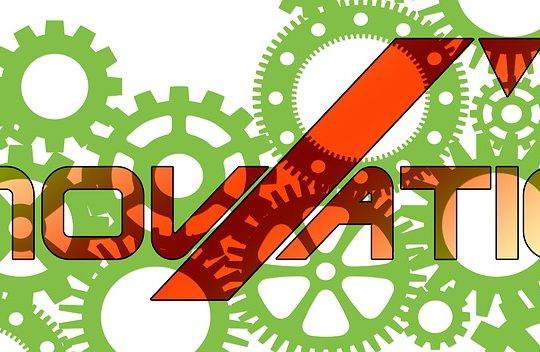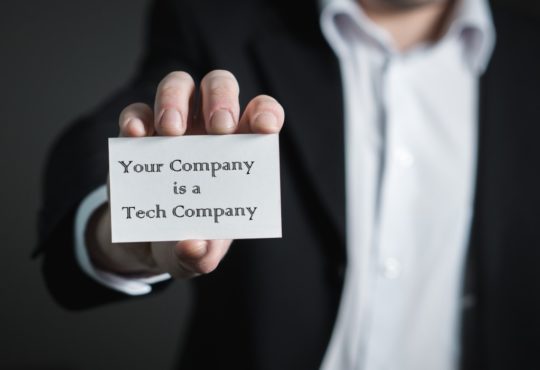
Technology changed, did you?
Technology is Changing Everything — Including how Business Needs to Interact with IT
A new relationships with IT includes:
- Changing the interaction between business and IT.
- Embedding technologists within your business groups.
- Changing company process when the underlying technology has changed.
A Need for Change
The speed that technology is advancing is exponential, and what was cutting edge as few as 10 years ago, is already being sunset and replaced. In such an environment, the only way to be disruptive is to have a strong relationship with your IT group and to embrace the changes. These changes will include viewing IT as a center for innovation, embedding technologist within your business groups, and changing process and strategy to match newer technologies.
IT Needs to Lead the Business to Newer Technologies
All competitive advantage is gained through technology! No matter the business space, the companies that are disruptive, are the companies that have adopted better technology than their competition. The challenge is to reverse the roles that business and IT have developed in the past. When technology and IT were just there to assist the business (think networking, Finance and ERP), there was a finite menu of things the IT group could offer to the business. As such, the IT department and business relationship was that not unlike a bar tender and patron when their are only 2 kinds of beer on tap.
Business: “I’ll have a beer.”
IT: “Miller coming up.”
To continue with the analogy, just like the explosion of micro brew and specialty beers has changed the interaction between patron and bartender, the relationship between business and IT groups must change to continue to be disruptive.
Business: “I really feel like one off those bitter beers.”
IT: “Bitter beers are generally called ‘hoppy’ and fall into a category called ‘IPA’. We have 3 different types of IPA. Would you like…”
The Beer Company That is Really a Technology Company — That Sells Beer
 A Beer company can gain advantage by making the beer better and cheaper through technology. When advances slow in the technology of production, the same companies advance the technology of distribution. When the distribution technology advances have peaked, the same companies advance their marketing through technology. When marketing has reached its plateau, the disruptive companies will undoubtedly find another area to apply technology to to further their advantage. At some point, this company has become a technology company that recoups it technology budget through the sales of beer.
A Beer company can gain advantage by making the beer better and cheaper through technology. When advances slow in the technology of production, the same companies advance the technology of distribution. When the distribution technology advances have peaked, the same companies advance their marketing through technology. When marketing has reached its plateau, the disruptive companies will undoubtedly find another area to apply technology to to further their advantage. At some point, this company has become a technology company that recoups it technology budget through the sales of beer.
Business must change to let the technology specialists at their company lead them into new technologies if they want to disrupt
How can Technologists Lead the Business? They Do Not Understand the Business
There is a catch 22 in business today. Business cannot possibly keep up with innovations in technology, and therefore cannot suggest anything innovative to IT. At the same time, the IT group is busy learning what the newest advances in technology are, but have no real idea about what the business needs are. As a result, disruption and innovation are often advanced by younger companies that have a much closer relationship between technology and business.
A Tale of Overwork and Despair
 Once upon a time there was a manager of a group of people that cleaned and prepared data for export to a client’s system. Along with being the manager, he also had his own accounts that he worked and cleaned as well. He worked very hard to get all of the data cleaned and took pride in the work he did. It was a very labor intensive process that had countless steps of things like:
Once upon a time there was a manager of a group of people that cleaned and prepared data for export to a client’s system. Along with being the manager, he also had his own accounts that he worked and cleaned as well. He worked very hard to get all of the data cleaned and took pride in the work he did. It was a very labor intensive process that had countless steps of things like:
- Get the Zip file from the ftp site.
- Save the file to the client folder.
- Unzip the file
- Copy the files to their respective folders as indicated by the names
- Open the files in Excel and move the 3 column to the first column
- Save the file as a .csv
- and on and on and on…
This manager was the best in the company at this process, he could complete every days work in only 4 hours. Then the client expanded their line of business and his workload doubled. He couldn’t keep up. He was working 50-60 hours per week. Being a good employee, he soldiered on and on until one day the owner of the company saw the number of hours he was putting in and thought “Surely this can be automated in some regard.” He sent in his best BA and told him to talk with the manager to find out what could be done to help. The BA returned several hours later to report, “Nothing can be done.”
The Conversation with the manager was fruitless, because the manager had an image of what IT could provide. That image was a filter that lead him to think that nothing at all could be done. The BA not knowing the process, took him at his word and reported back. Had the business had a technologist that was embedded in the day to day work space, that person could have recognized several areas of repetition that could have been automated.
Embedding technologists within the different groups of the business will help identify areas that are ripe for technology upgrades.
Business Process must Change When the Technology That Supports the Business Changes
A phenomenon that is all to common in businesses of a certain age is the belief that their processes are the thing that gives them competitive advantage. While this is definitely the case in the areas that pertain directly to the market they are in, it DOES NOT hold true in many other situations. The business needs to recognize where they are actually gaining competitive advantage, and where they are operating in a “We’ve always done it that way” mind set. One of the biggest areas where this is prevalent is in the accounts payable and accounts receivable areas of the company. Every company has AP and AR in some manner. Most companies implement software packages that assist with these functions. Companies will select these software packages based on how well they map to their current AP and AR processes, and by how easily they can be customized to cover the gaps in functionality that the software has. It becomes folly when the company thinks that their process for this ubiquitous process is so special that they need to develop custom software to make the new package map to the existing process. In actuality, this is an instance of competitive advantage can be gained by rethinking and recreating your business processes for AP and AR that allow for the most streamlined and automated process that technology allows. There are systems that can almost make these processes hands off–If a company is willing to change.
When upgrading and replacing technology, business needs to re-evaluate existing processes and implement changes that match and make sense with the new technology.
~Tal McMahon



